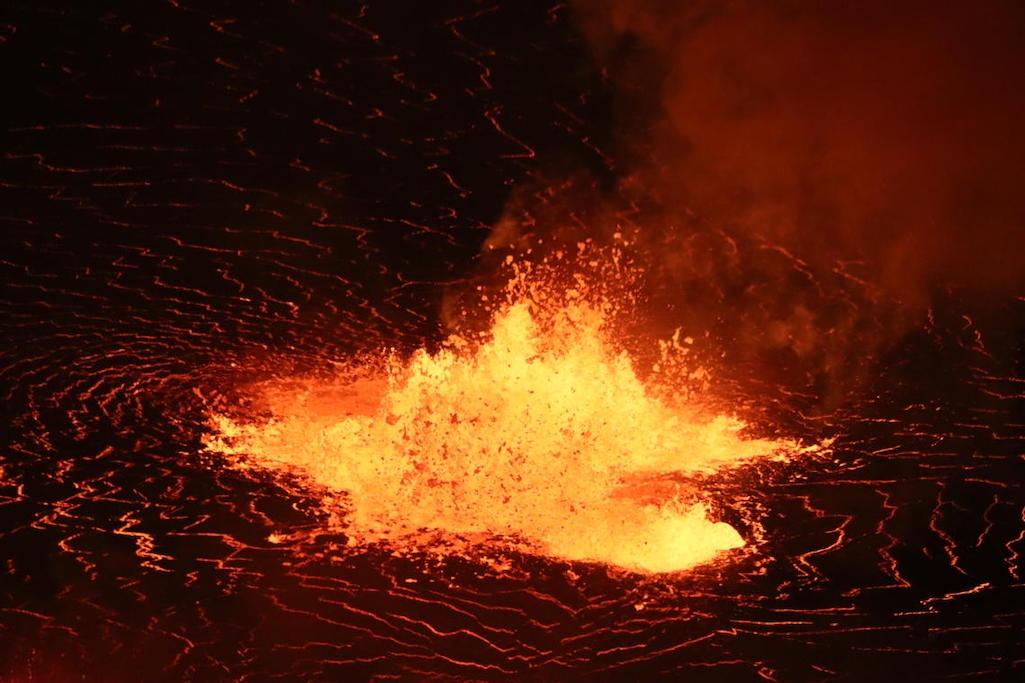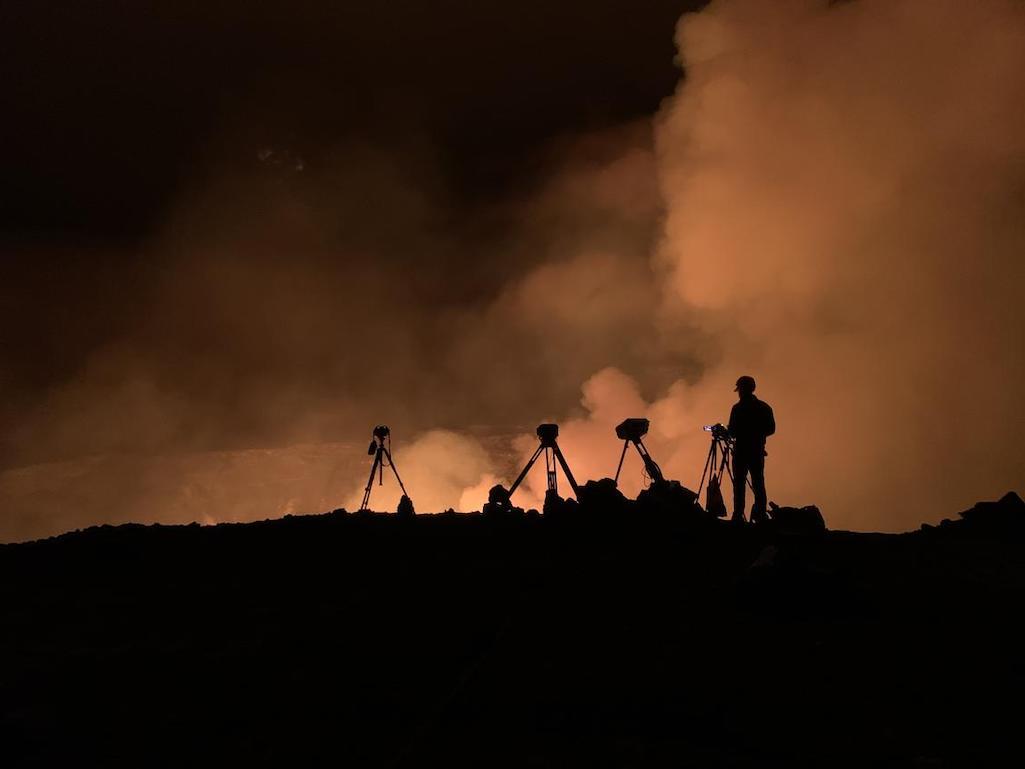
A telephoto image of one of the low lava fountains near the center of the growing Halema'uma'u lava lake. The ongoing eruption at the summit of Kīlauea is confined within Halema'uma'u, with numerous lava fountains producing lava and volcanic gases. Hawaiian Volcano Observatory scientists are monitoring the new eruption from an area within Hawai'i Volcanoes National Park that remains closed to the public due to safety reasons/USGS, M. Patrick.
Kīlauea Volcano, viewed by the U.S. Geological Survey as the most dangerous volcano in the United States, has resumed its eruptions deep within its Halemaʻumaʻu Crater at Hawai'i Volcanoes National Park.
USGS remote cameras noticed a glowing aura deep within the crater Wednesday afternoon. "Webcam imagery shows fissures at the base of Halemaʻumaʻu Crater generating lava flows on the surface of the lava lake that was active until May 2021," the agency said in a release.
"The opening phases of eruptions are dynamic and uncertain. HVO continues to monitor the volcano closely and will report any significant changes in future notices," it added.
The volcano last erupted from December 2020 into May of 2021. Prior to that, in 2018 Kīlaeau started erupting in early May and continued into August. Some of the more violent eruptions and lava flows destroyed hundreds of homes and structures below the volcano, redesigned the Halema‘uma‘u Crater, and greatly damaged park infrastructure.

Kīlauea Volcano is erupting. With the summit eruption continuing through the night, HVO scientists monitor the eruption for changes in activity and volcanic hazards. High levels of volcanic gases are the primary hazard of concern, as this hazard can have far-reaching effects down-wind/USGS, D. Downs, 9-30-21
During the 2018 eruptions nearly 13 square miles of the island were covered by the lava flows, which also forced thousands to evacuate their homes; more than 700 homes were destroyed by the eruptions. Damage estimates ran to at least $100 million, with Crater Rim Drive significantly cracked and buckled while the park's Jagger Museum sustained significant structural damage from thousands of related earthquakes.
At the national park, officials Wednesday cautioned the public to be careful and avoid closed areas.
- Volcanic eruptions can be hazardous and change at any time. Stay on marked trails and overlooks, and avoid earth cracks and cliff edges. Do not enter closed areas.
- Hazardous volcanic gases are billowing out the crater and present a danger to everyone, especially people with heart or respiratory problems, infants, young children and pregnant women.
- Slow down and drive safely. Expect long waits for parking spaces at popular vantage points like Uēkahuna (formerly the Jaggar Museum).
- At 1,219 meters, (4,000 feet), the summit of Kīlauea can be chilly at any time. Bring a rain jacket, wear long pants and closed-toe shoes. Bring a flashlight if visiting at night.
- Eruption status updates, live web cams, and planning tips are available on the park website.
“Viewing lava at the summit of Kīlauea is awe-inspiring. During this COVID-19 pandemic, we ask the public to recreate responsibly, maintain social distance and to wear a mask,” said Hawaiʻi Volcanoes Superintendent Rhonda Loh. “We want to keep the park open for all to experience this new phase of volcanic activity, but we can only do so if visitors follow guidelines that keep everyone safe. We continue to work with USGS scientists to receive the latest volcanic updates, and remind visitors that the eruptive activity and accessibility could change at any time.”



Add comment